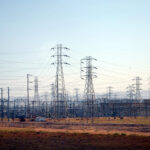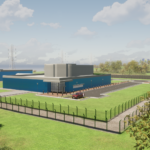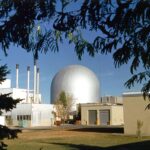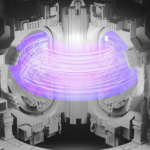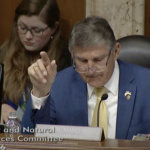ˈsāf: America’s nuclear power plants?
By Dawn Stover | August 29, 2011
When the US Nuclear Regulatory Commission released its task force’s recommendations for enhancing reactor safety in response to the Fukushima Daiichi accident, an editorial in the Washington Post summarized the findings this way: “America’s plants are safe. But they could be safer.”
Indeed, that was the message spread by many NRC representatives when speaking to reporters and public officials. Since the Fukushima accident, NRC Chairman Gregory Jaczko, for one, has repeatedly stated that US nuclear power plants are “safe.” For example, in response to a question from Representative Ed Markey just six days after the accident, Jaczko said: “We continue every day to make sure that the plants are safe.”
NRC materials prepared for the general public also spread the “safe” message. For example, one of the NRC’s answers to frequently asked questions about the Fukushima accident is: “The NRC continues to determine that US nuclear plants are safe.”
Trouble is, the six people on the task force — who collectively have more than 135 years of regulatory experience — never once said this in their 96-page report. Neither did the July 13 press release from the NRC Office of Public Affairs. To the contrary, the press release’s headline emphasized the need for upgrades: “NRC’s Japan Task Force Recommends Changes to Defense in Depth Measures at Nuclear Plants; Cites Station Blackout, Seismic, Flooding and Spent Fuel Pools as Areas for Improvement.” Sure, there is plenty of talk in the task-force report about safety and how to “enhance” it, but the word “safe” doesn’t seem to be in the NRC’s official vocabulary except in reference to the “safe shutdown” of a reactor.
What the NRC’s Japan task force actually determined is that continued operation of America’s nuclear plants “does not pose an imminent risk to public health and safety.” Whew. You are not going to die tomorrow. Apparently that’s what passes for “safe” in some circles these days.
According to my dictionary, “safe” means something is “secure from threat of danger, harm, or loss.” A nuclear power plant that is completely risk-free sounds good to me. But then how could it get any safer? And where did the Post, other media outlets, and Chairman Jaczko get this comforting notion that America’s nuclear power plants are safe?
As Jaczko stated in prepared remarks at the National Press Club on July 18, the NRC task force called on the commission “to redefine ‘adequate protection’ in light of what we have learned from Fukushima.” Adequate protection, Jaczko explained, “is the NRC’s statutory mandate for safety.” After September 11, and now again, he said, the NRC “has deemed it necessary to revisit this standard and redefine how safe is safe enough.” In other words, when Jaczko and others say that America’s nuclear power plants are safe, what they really mean is that they are safe enough. But how would it sound if they actually said that?
The NRC’s response to the recent earthquake in Virginia, which shut down the nearby North Anna nuclear power plant and left it with no offsite power for several hours, was similar to the Fukushima response. The NRC issued two press releases (on August 23 and 24) reminding reporters that US nuclear power plants are “designed for safety in the event of such a natural disaster.”
Over the past few years, the NRC has been examining updated seismic models and information for nuclear power plants in the eastern and central United States. “That work continues to indicate that US nuclear facilities remain safe,” Jaczko told a Congressional budgeting committee in March.
Later this year, however, the NRC will require plant operators across the nation to update their reviews of earthquake risks, using a new seismic analysis tool that will be provided to them. An NRC spokesman told Reuters that the new analyses “could show areas where plants can improve what is already an acceptable seismic design.” It seems that “acceptable” designs might not be safe enough after all.
Unfortunately, the general public may not grasp these subtle distinctions between safe, safer, and safe enough. When they’re told something is safe, non-experts tend to think that means an accident can’t happen, and Merriam Webster is on their side. But that interpretation is a long stretch from what the NRC really means: an accident probably won’t happen. So long as a nuclear plant is prepared for all but the rarest events, even those that are potentially catastrophic, it’s … well, safe. In fact, most nuclear experts agree that it’s virtually impossible to guarantee that an accident can’t happen. Whether something is safe is simply a matter of degree, rather than a yes-or-no question.
By an NRC-style definition, the nation’s airport security system was “safe” until September 11, 2001. The levees in New Orleans were safe until Hurricane Katrina struck. The US food inspection system was safe until people fell ill after eating ground turkey contaminated with salmonella. Even the Fukushima Daiichi nuclear reactors were safe.
But they could have been safer.
Together, we make the world safer.
The Bulletin elevates expert voices above the noise. But as an independent nonprofit organization, our operations depend on the support of readers like you. Help us continue to deliver quality journalism that holds leaders accountable. Your support of our work at any level is important. In return, we promise our coverage will be understandable, influential, vigilant, solution-oriented, and fair-minded. Together we can make a difference.
Topics: Columnists, Nuclear Energy



